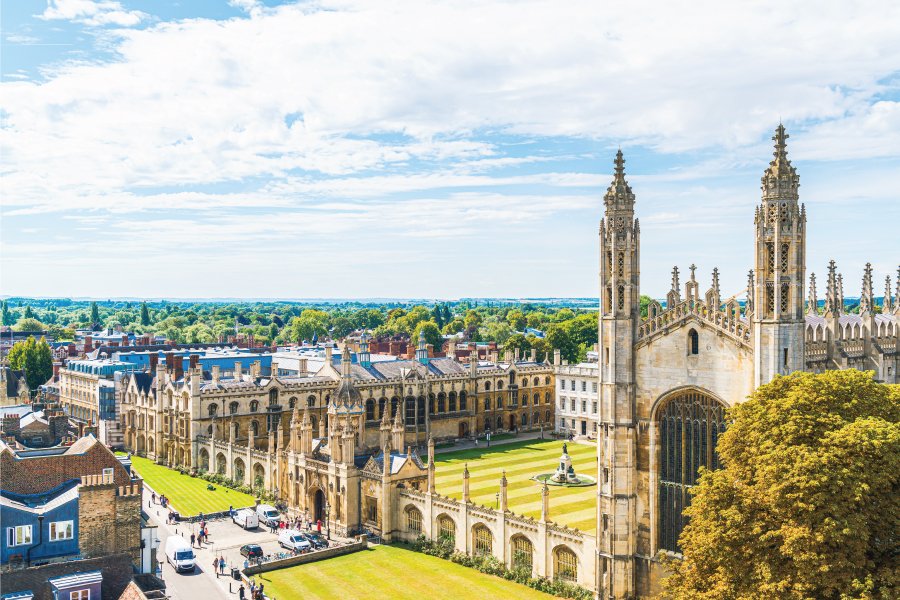Many jewels - and jewelry sets - have a long and storied history, and you'll find lots of interesting and intriguing tales behind many an emerald jewelry set. One of the most fascinating - and slightly scandalous - is that behind an emerald jewelry set known as the Cambridge Emeralds.
The drama of a set of exquisite emeralds won in a lottery and nearly lost to a love affair is one of the most legendary stories in British royal jewelry history.
The Lottery Prize Emeralds
The story of the Cambridge Emeralds emerald jewelry set began almost two hundred years ago in Germany. After Princess Charlotte of Wales died unexpectedly, King George III's sons had to hustle to marry and produce a legal heir to the throne.
In 1818, the king's seventh son, Prince Adolphus, Duke of Cambridge, married Princess Augusta of Hesse-Kassel, a young German royal. The new Duke and Duchess of Cambridge made their home in Hanover, where Adolphus was the monarch's viceroy. Augusta chose to buy raffle tickets for a state-sponsored charity lottery in Frankfurt while visiting her native Hesse. She won, and was awarded a little box containing approximately forty cabochon emeralds of varied sizes. The stones were fittingly dubbed the Cambridge emeralds.
The personal union between the crowns of Britain and Hanover ended in 1837, when their niece Victoria became queen. The Cambridges relocated to Kensington Palace in England. For the first time, the 'lottery' emeralds were used to make jewelry once the pair were settled in the United Kingdom. Princess Augusta commissioned an English jeweler to design a necklace with five pendants and a pair of emerald drop earrings.
Adolphus and Augusta had three children: Prince George, who inherited his father's Cambridge dukedom; Princess Augusta, who married the Grand Duke of Mecklenburg-Strelitz; and Princess Mary Adelaide, who married the Duke of Teck, a member of the royal family of Württemberg.
Princess Mary Adelaide, Duchess of Teck, inherited her mother's emeralds, comprising the necklace, earrings, and the remaining loose stones, when Princess Augusta, Duchess of Cambridge died in 1889. But the drama was only just beginning at that point.
The Cambridge Emeralds and the Hidden Will
Mary Adelaide preserved the necklace and earrings, but she embellished one of her diamond stomachers with two of the loose emeralds. Royal jewelers Garrard had previously crafted the stomacher for her out of diamonds, but she had one of the emeralds set in the center and another strung as a pendant from the bottom.
Mary's daughter, Princess May of Teck had been chosen as a wife for the Duke of Clarence, the Prince of Wales's eldest son. She eventually opted to marry his younger brother, the Duke of York, in July of 1893, after he died unexpectedly. When the Duchess of Teck died unexpectedly in 1897, the new Duchess of York became the most dynastically significant of Mary Adelaide's children, yet she did not receive the Cambridge emeralds.
Instead, the emeralds were given to Prince Francis of Teck, the Duke and Duchess of Teck's third child. Frank was a bachelor, therefore he didn't have a wife to wear the stones, but he did have a mistress: Nellie, Countess of Kilmorey. When Frank died suddenly in 1910, the Cambridge Emeralds were almost lost to the royals, since he had opted to gift them to Nellie.
As you might expect, Frank's sister (who became Queen Mary only a few weeks after Frank's death) was not pleased with their grandmother's emeralds' destiny. She had lawyers make Frank's will private—a practice that persists to this day, much to the anger of many—and then she went straight to Nellie Kilmorey to reclaim the emeralds. And she succeeded!
There are several accounts of how Mary was able to reclaim the emeralds from Nellie. Some claim Mary merely demanded their return, but it's far more likely that money was exchanged. Finally, Queen Mary ensured that her family's jewels would become an important part of the British royal collection.
The Cambridge Emeralds Today
Mary came up with new ways to use the emeralds once she got her hands on them. King George V and Queen Mary commissioned Garrard to produce a new set of diamonds for their 1911 coronation in India, the Delhi Durbar.
A tiara, a necklace, a stomacher, and a pair of earrings were created by the jewelers. Ten pear-shaped Cambridge emeralds were placed atop a diamond border in the original tiara. The emerald jewelry set's necklace has nine more Cambridge emeralds, the stomacher has seven, and the earrings have two.
The Delhi Durbar Parure is noteworthy in part because it blends emeralds from Queen Mary's family with some of the largest and most magnificent diamonds in the royal vaults (the Cullinan stones). Nothing says "I'm your legitimate queen consort" like combining family heirlooms with magnificent royal jewelry.
Queen Mary had the emeralds removed from the top of the Delhi Durbar Tiara and used them on a smaller diamond bandeau a few years after the Delhi Durbar. But she wasn't finished with the Cambridge emeralds set in a huge diamond tiara. After the revolution, she bought the Vladimir Tiara from the daughter of Grand Duchess Maria Pavlovna of Russia and altered it to wear with the Cambridge Emeralds in 1924. Five more emeralds were added to the ten stones that had been put atop the Delhi Durbar Tiara, increasing the total number of emeralds in the Vladimir Tiara to fifteen.
The Vladimir and other portions of the Delhi Durbar Parure are still worn by Queen Elizabeth II on a regular basis. (The Duchess of Cornwall currently owns the Delhi Durbar Tiara, which is missing its emeralds.) Queen Mary was a significant presence in Elizabeth II's early years, and she still wears a lot of her grandmother's jewelry. It's fascinating to think that more of Queen Mary's descendants, including Princess Charlotte of Cambridge, the present Cambridge princess, may wear pieces of the emerald set that dates back to her family's early royal roots, in the future.







